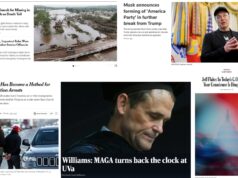Click here to join our email list and be the first to know when new episodes are released.
With Congress returning this week, 90 Second Summaries kicks back into gear for the fall. All eyes will be on President Obama as he delivers an address Thursday evening to a joint session of Congress. Mr. Obama is expected to propose a infrastructure-related program to get the economy moving again, and an infrastructure bank is a prime candidate for inclusion in this package.
Last season, we covered a prominent infrastructure bank bill by Rep. Rosa DeLauro (D-CT3) and released an interview with the Congresswoman alongside it. Rep. DeLauro has reintroduced her proposal for the 112th Congress, so we are updating this episode to account for recent developments, and we’ll be posting highlights of the interview on Thursday.
Here’s the episode:
As always, the one-pager with more details is below the fold.
90 Second Summaries: Season 2, Episode 19
H.R. 402: National Infrastructure Development Bank Act of 2011
Introduced 1/24/2011
Sponsor: Rep. Rosa DeLauro (D-CT3)
Click here to download this summary (pdf)
Cosponsors: 61 (61 Democrats, 0 Republicans). Full list at http://thomas.loc.gov/cgi-bin/…
Status: In Energy & Commerce and Transportation & Infrastructure Committees. Financial Services has partial jurisdiction. T&I Chairman John Mica (R-FL7) has announced his opposition. No action scheduled as of 9/6/11. President Obama is expected to include a proposal of this nature in his jobs package, which will be released later this week.
Senate Companion: S. 652, Building and Upgrading Infrastructure for Long-Term Development (the BUILD Act), sponsored by Sen. John Kerry (D-MA). 8 Cosponsors (6D, 2R). Similar in concept but different in details and smaller in size/scope. In Finance Committee, no action scheduled as of 9/6/11.
Purpose: In 2009, the American Society of Civil Engineers gave America’s infrastructure a grade of D, and estimated the 5-year need for investment at some $2.2 trillion. The Infrastructure Bank provides a funding mechanism for a variety of projects through public-private partnerships that will help close the “infrastructure gap”.
Summary: H.R. 402 would establish an independent, wholly-owned government corporation called the National Infrastructure Development Bank. Following a $25 billion initial capitalization over five years, it would be a self-sustaining entity capable of leveraging as much as $625 billion in private investment by issuing direct loans and subsidies, loan guarantees, bonds and debt securities, borrowing on the global capital market at low interest rates and pooling infrastructure-related loans and securities on the market to spread risk. The Bank would help capitalize the following:
1) Transportation Infrastructure Projects (e.g. public transit, highway and bridge repairs, port development)
2) Environmental Infrastructure Projects (e.g. drinking water treatment, waste disposal facilities, dams and levees)
3) Energy Infrastructure Projects (e.g. retrofitting buildings, smart grid, development of renewable capacity)
4) Telecommunications Infrastructure Projects (e.g. broadband expansion)
The legislation lays out a set of criteria for each project type by which each applicant must be evaluated to determine potential impact and eligibility. These generally involve environmental, health and income distribution considerations as well as more traditional cost-effectiveness criteria and other sector-specific factors.
The Bank will be governed by a five-member Board of Directors, all appointed by the President and confirmed by the Senate. The Directors will represent different regions of the country and be split between the private and public sectors in their backgrounds. The Bank’s charter is scheduled to sunset after 15 years.
CBO Score: None provided. A 2008 CBO report included a discussion of an NIB and similar proposals: http://1.usa.gov/qcmLVJ
Supporters: President Obama, Building America’s Future (state & local electeds), Chamber of Commerce, SEIU, etc.
• Supporters believe this measure will substantially boost crucial infrastructure spending and create jobs. It will also allow for a more efficient allocation of infrastructure resources by removing political considerations.
Opponents: No public opposition, but expected to draw fire from a variety of fronts, each for a different reason.
• Opposition will likely be opposed to a large new government program, especially a government-owned bank. Some have argued that this would be a handout to unions.
Further links
Full bill text: http://www.govtrack.us/congress/billtext.xpd?bill=h112-402
Official CRS summary: http://www.govtrack.us/congress/bill.xpd?bill=h112-402&tab=summary
American Society of Civil Engineers Report Card for America’s Infrastructure: http://www.infrastructurereportcard.org/
Main Street Insider interview with Rep. DeLauro: http://www.youtube.com/watch?v=_xclINQYSA4
Transportation for America statement on the Senate bill: http://bit.ly/gonrNW
AP Article on Obama’s jobs package and the Infrastructure Bank: http://yhoo.it/n0n35h
Rep. Mica op-ed opposing Infrastructure Bank: http://bit.ly/pOTF7Z












